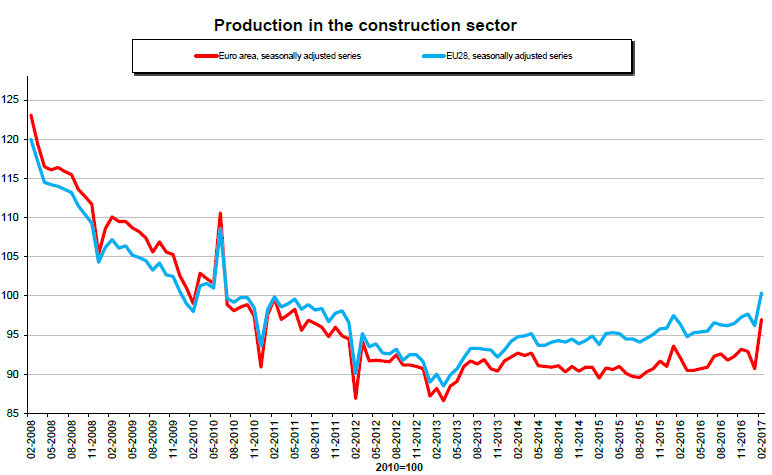Da Costa Cabral, Nazare, (2016), “Which Budgetary Union for the E(M)U?”, Journal of Common Market Studies 54(6), 1280-1295, 30 Ιουνίου This article considers whether the creation of a budgetary union in the European EMU (economic and monetary union) is a feasible and suitable way to resolve the current impasse created by the euro crisis. The article begins by identifying the major drawbacks concerning the transposition of prescriptions regarding fiscal federalism …Read More
Necessity as the mother of invention: monetary policy after the crisis
Blinder, Alan, Ehrmann, Michael, de Haan, Jakob, Jansen, David-Jan, (2017), ” Necessity as the mother of invention: monetary policy after the crisis”, ECB Working Paper Series No 2047, Απρίλιος We ask whether recent changes in monetary policy due to the financial crisis will be temporary or permanent. We present evidence from two surveys—one of central bank governors, the other of academic specialists. We find that central banks in crisis countries are more likely to …Read More
Eligibility easing and the lender of last resort
Huertas, Thomas, (2017), “Eligibility easing and the lender of last resort” , Vox Eu, 21 Απριλίου 2017 Few issues are as important or as controversial as the lender of last resort (Bank for International Settlements 2014). Indeed, this function is arguably what makes central banking central to the financial system, and to the economy at large. As is well known, the lender of last resort (LOLR) function played a key role …Read More
Production in construction up by 6.9% in euro area up by 4.4% in EU28
Eurostat/Production in construction up by 6.9% in euro area up by 4.4% in EU28/24 Απρίλιος 2017 In February 2017 compared with January 2017, seasonally adjusted production in the construction sector increased by 6.9% in the euro area (EA19) and by 4.4% in the EU28, according to first estimates from Eurostat, the statistical office of the European Union. In January 2017, production in construction fell by 2.4% in the euro area and …Read More
How to Break Europe’s Financial ‘Doom Loop’
Bloomberg View, (2017), “How to Break Europe’s Financial ‘Doom Loop’”, 21 Απριλίου The euro-zone economy is looking a lot healthier. After years of stagnation, growth has finally picked up and unemployment is falling. Fears of a paralyzing bout of deflation have receded as well. Yet there’s a risk of relapse — and Europe’s banking “doom loop” is the reason. Σχετικές Αναρτήσεις Honohan, Patrick, (2017), “Management and Resolution of Banking Crises: …Read More
Five Keys to a Smart Fiscal Policy
Gaspar,Vitor, Eyraud, Luc, (2017), “Five Keys to a Smart Fiscal Policy”, IMFBlog, 19 Απριλίου Today’s conditions require new, more innovative solutions, which the IMF calls smart fiscal policies. By smart policies we mean policies that facilitate change, harness its growth potential, and protect people who are hurt by it. At the same time, excessive borrowing and record levels of public debt have limited the financial resources available to government. So, …Read More
Euro area international trade in goods surplus €17.8 bn
Eurostat/Euro area international trade in goods surplus €17.8 bn/19 Απριλίου 2017 The first estimate for euro area (EA19) exports of goods to the rest of the world in February 2017 was €170.3 billion, an increase of 4% compared with February 2016 (€163.2 bn). Imports from the rest of the world stood at €152.6 bn, a rise of 5% compared with February 2016 (€144.9 bn). As a result, the euro area …Read More
A new bargaining perspective on sovereign debt restructuring
Miller,Marcus, Ghosal,Sayantan, (2017), “A new bargaining perspective on sovereign debt restructuring”, VoxEU, 17 Απριλίου Lacking some supra-national, overseeing authority, sovereigns in default typically renegotiate with their creditors. In these negotiations, the owed principal typically receives a ‘haircut’. This column explores whether overburdened sovereign debtors can strategically leverage delay as they bargain with their creditors. Under asymmetric information, a delay in the form of offers that the debtor knows won’t be …Read More
The ECB’s announcements of non-standard measures and longer-term inflation expectations
Karadi, Peter, (2017), “The ECB’s announcements of non-standard measures and longer-term inflation expectations”, European Central Bank Research Bulletin No. 33, 18 Απριλίου Stable and well-anchored longer-term inflation expectations bolster the ability of the European Central Bank (ECB) to achieve its medium-term inflation objective. This article assesses the effectiveness of non-standard monetary policy measures in guiding longer-term inflation expectations in an environment where standard interest rate policy approaches the lower bound. …Read More
Annual inflation down to 1.5 % in the euro area
Eurostat/Annual inflation down to 1.5 % in the euro area/19 Απριλίου 2017 Euro area annual inflation was 1.5% in March 2017, down from 2.0% in February. In March 2016 the rate was 00.0%. European Union annual inflation was 1.6% in March 2017, down from 2.0% in February. A year earlier the rate was 0.0%. These figures come from Eurostat, the statistical office of the European Union. Σχετικές Αναρτήσεις Eurostat/Euro area …Read More








